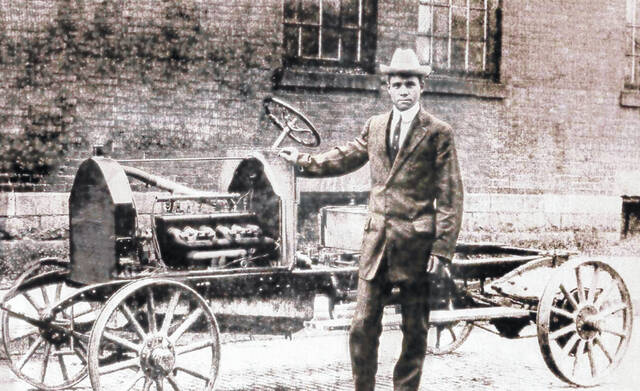
Editor’s note — The following is an excerpt from “Black History of Highland County” authored by Kati Burwinkel, Myra Cumberland Phillips and John Glaze, in recognition of Black History Month. The book is available through the Highland County Historical Society.
Few will not recognize the importance of C. R. Patterson to Highland County and, specifically, to Greenfield. According to the Greenfield Historical Society, Charles Richard Patterson was born a free person of color, although other sources cite him as born into slavery. According to the generally accepted story, in 1861, just prior to the start of the Civil War, Patterson left his native Virginia by way of the Allegheny Mountains, passing through the slave state of West Virginia, after which he crossed the Ohio River to the relatively safe free state of Ohio.
Once safely in Ohio, he traded his service as a blacksmith and wagon repairman in exchange for room and board and by 1862 had arrived in Greenfield, where he found plenty of work awaiting him. At that time Greenfield was a well-known way-station along the route typically followed by escaped southern slaves traveling to Columbus, Ohio, a popular end-point of the pre-Civil War Underground Railroad.
Patterson was subsequently hired as a blacksmith by Dines & Simpson, Greenfield’s best-known wagon and coach builder, and was eventually promoted to the position of foreman of the firm’s small factory. Sometime around, Patterson married Josephine Utz (aka Outz), an attractive Mulatto woman of German descent, and in 1866 their union bore a daughter named Mary. In 1871, a son, Frederick Douglas, joined the family; closely followed by another, Dorothea (Dollie), in 1873; a second son, Samuel C., in 1875; and a third daughter, Kate, in 1879.
The work achieved as a Black-owned carriage, automobile and bus manufacturer is known far beyond Highland County’s borders. What is not readily known, however, is the importance Patterson placed on education, and how his son, Frederick, became an outstanding student and boundary breaker in his own right.
Before Greenfield schools were integrated, Frederick had attempted to gain admission to the white school on Sept. 6, 1886, and on every day following, only to be refused by then-superintendent, William G. Moler. By Sept. 30, a case was filed on behalf of Fred, then 16 years of age. Among other things, the suit claimed that Fred was three-fourths white and only one-fourth Black, that the Black blood was scarcely visible, that the board of education provided elementary and grammar schools for the Black students separate from the white school, but only operated one high school. His promotion card said that he was, “Promoted to the B Grade High School Grade” and should, therefore, be admitted to the one and only high school.
As courts normally do, suits, hearings and the like took up months until by April 1887, judge Huggins ruled that the board of education immediately admit Fred and that the defendants were to pay court costs. His ruling came barely a month after the Ohio Legislature repealed separate school rulings and allowed mixed schooling.
Frederick Douglas Patterson became the first African-American to graduate from the Greenfield high school, following which he attended Ohio State University and became the first African-American to be a member of the football team in 1891. In addition, he was elected as president of his Ohio State class.
He taught high school in Louisville, Kentucky for 4.5 years, returning to Greenfield to run the Patterson Company following his father’s death. He was a city councilman, a member of the Knights of Pythias and the Masonic Lodge. At one point, served as second vice president of the National Negro Business League.


